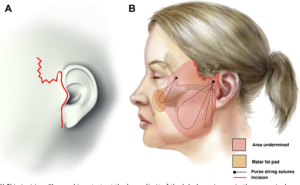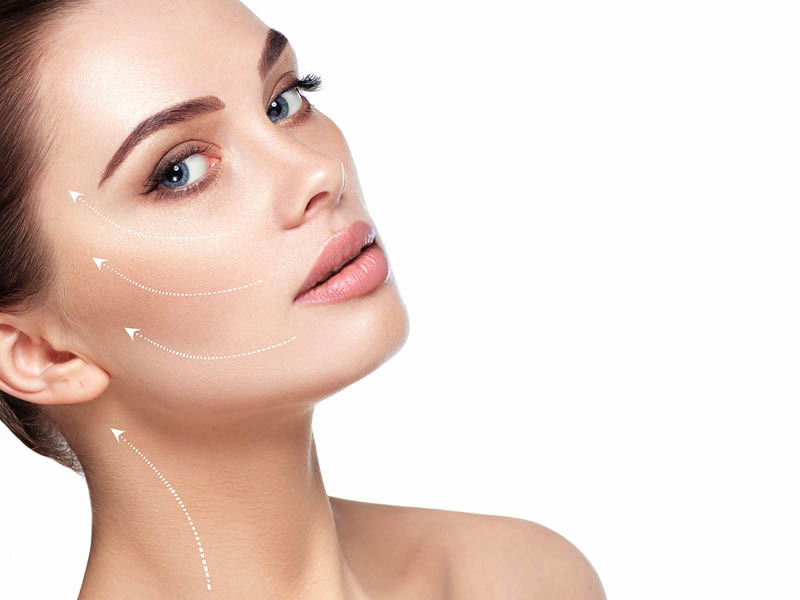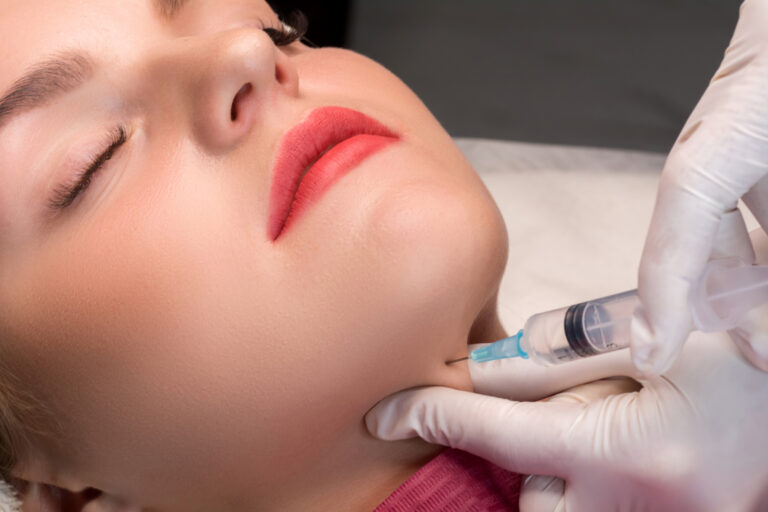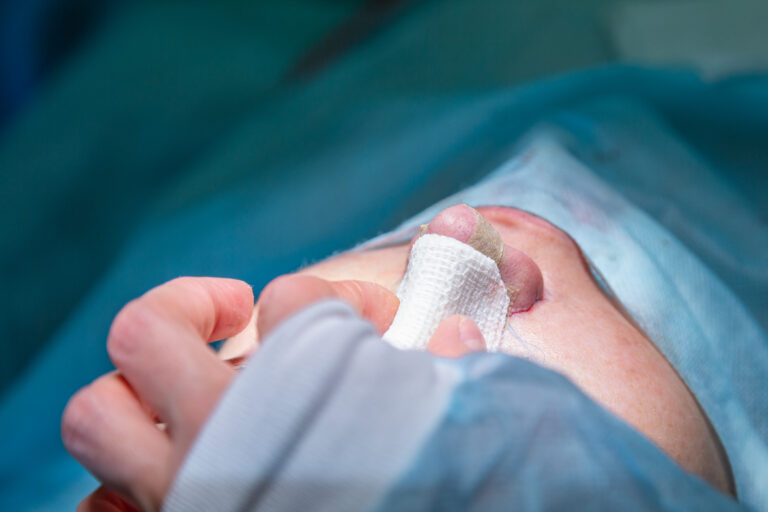Facelift
Facelift or rhytidectomy, is a surgery that is done to reverse the clock of ageing, by reducing the visible ageing signs in the face and neck. Depending on the amount of lax skin, sag, lines and grooves, the surgeon decides on the type of facelift procedure to be undertaken.
Different facelifts exist: MACS facelift, classical facelift, deep plane facelift, mini facelift, endoscopic facelift and liquid facelift. Liquid facelift is the only minimally invasive procedure here which is done with botulinum toxin (Botox) and dermal fillers. Facial fat grafting (FFG) has recently been clubbed with facelift to help restore facial youthfulness and replenish the lost volume.
When and Why is a Facelift Done?
- Skin of your face starts sagging excessively with age (subjective)
- Deeper folds appear between your cheeks and nose/mouth
- Face has deflated or lost volume (fat) and skin sags
- Fat deposits in pre jowl area and jowls appear
- Marionette lines appear, angles of mouth start turning down
- Face looks haggered and wrinkled
- Cheek bones recede and cheek fat starts drooping down
- Lose skin and excess fat on your neck giving an appearance of double chin and wrinkled/furrowed neck
What a facelift cannot do is
- Change your entire look
- Give you a wind-blown appearance
- Leave behind large evident scars
Pre-requisites
- Cessation of smoking, chewing tobacco
- Avoid any foodstuffs/medication which can increase bleeding like aspirin, NSAIDS, excess garlic, Vitamin E supplements, etc. Cessation of recreational drugs, such as cocaine, ginseng, etc.
- Do arrange for a driver to take you back home post-surgery or some relative/friend to stay with you in case you need one nights admission.
Procedure of Facelift
A facelift “lifts” and “tightens” the skin and soft tissue structures of the face. Depending on the case, there are various methods of conducting the lift and addressing the SMAS (Superficial Muscular Aponeurotic System): SMAS-ectomy, SMAS plication, MACS lift, deep plane facelift, etc. Whatever the method employed, the aim is to deliver a natural looking result (not a wind-blown appearance).
Technicality of a facelift
Superficial muscular aponeurotic system or SMAS is the area of facial mimetic musculature which lies beneath the facial skin. This layer, along with the facial fat compartments and ligaments, loosen with time (ageing and gravity contributing) which require tightening.
A SMAS-ectomy is preferred in bulky faces. A portion of the SMAS is removed (safeguarding the facial nerve and its fibres) and the free edges are strategically sutured leading to the lift. The face looks thinner and more proportionate.
SMAS plication is a commoner procedure for thinner faces, where the SMAS is just sutured together to create a lift. There is no removal of muscle. Hence the volume of the face remains intact, and enhances the natural contours.
The MACS lift or the Minimal Access Cranial Suspension technique employs a loop using suture(s) which go through the SMAS and lifts it in a vector which simulates the placement of your skin and soft tissue as it was, years ago.


Classical (Full) Facelift
A full facelift involves making an incision along the ear, into the forelock and may extend below and behind the ear if a neck lift is combined with it. Its a combination of the mini facelift (lower face) with midface lift. A face lift can also be combined with the following:
Neck lift, brow lift (eyebrow lift), eye lid surgery (blepharoplasty – upper and lower) and facial fat grafting. A neck lift involves platysma (neck muscle) plication and removal of excess skin aesthetically. The scar is well hidden along with the ears and in the hairline, ensuring a very natural looking result. Drains are used.
Mini Facelift
In this procedure, the lower third of the face is tightened, thereby defining the jawline and enhancing the neck definition. Incision is limited along the contours of the external ear and to the back of the ear if a neck lift is desired along with it. The SMAS is pulled up appropriately and tightened, the skin re-draped and closure done. Drains may be used. This is a day-care procedure meaning and the patient goes home on the same day.
Liquid Facelift
This is a relatively new concept involving strategic usage of injectables to volumise the face. The skin and soft tissues automatically “lift” with the added volume. Botox helps in effacing wrinkles and fine lines. Facial volumisation can be best done with either hyaluronic acid (HA) fillers or fat. HA fillers are akin to the HA present in our body and are hence completely safe. They are degraded by the body over a year or so. Fat lasts for a longer time. It’s a quick fix and the results can last for up to a year.
Recovery after a surgical facelift
- Outpatient procedure, depending on the type of surgery chosen.
- Some swelling, bruising & discomfort in the first week are inevitable. This is only temporary and diminishes as the recovery progresses.
- You may have a bandage dressing around your face to minimize swelling and bruising. You will be asked to cold compress your face for about 48 hrs post-surgery.
- Drains may be present to draw off any excess blood or fluid.
- You can start your activities of daily living from next day after the surgery.




